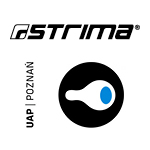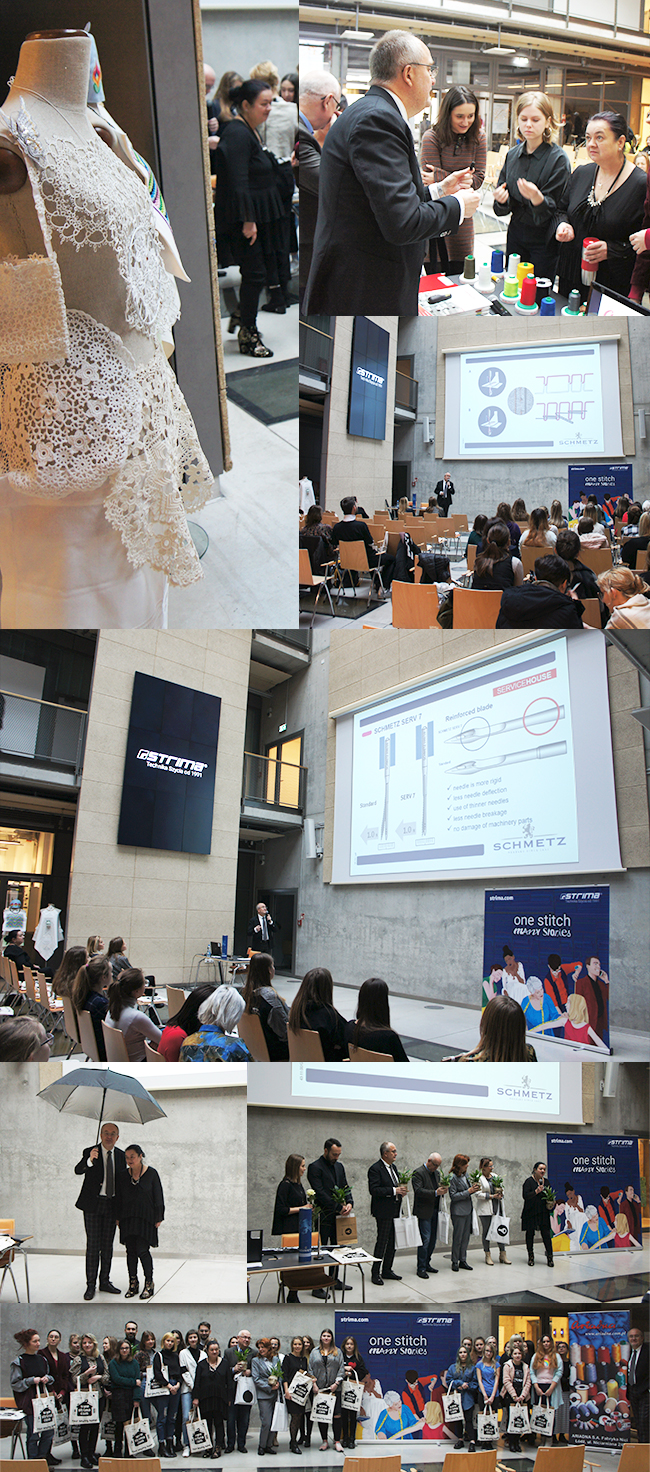28-11-2018 She danced the needle and thread. Seminar

"She danced a needle with thread, or a little bit of knowledge about needles and threads" Last Tuesday, 27/11/2018, at the University of Arts in Poznań, a seminar was held to familiarize students with the needle and thread knowledge. It is a kind of return to sources, origin and history, in a way, in a way, about fashion, which can only be said from the moment of the invention of the perfect needle in its form and function, which is complemented by the thread. One of the lecturers was the President of the Strima board, Paweł Broński.

Needle and thread. Without them, we would not have the clothes we wear every day.
The lecture on threads, their production or types was answered by Ariadna from Łódź in the person of Mr. Marek Gajdamowicz. Strima was responsible for the needle section.
WHO WAS THIS LEONARDO DA VINCI? This was the title of a lecture on needles.
For all who could not be at the lecture, some history ...
The ancestor of today's needle is an awl bone. Archaeological findings prove that it has already been used for 28,000 years BC, yet without an eyelet, with a split end with "thread" in the form of pieces of tendons, phloem or intestines. The first known needles with an eye, usually made of bones and horns, come from 17,500 BC. The shape of the hand sewing needle, since then, in principle has not changed ... 3,500 a year e. it brings the use of copper for the production of needles, and 1,000 years later, Mediterranean craftsmen produce them from bronze. Iron was used for the production of various tools, including needles, 1,000 years BC. Unfortunately, its low resistance to corrosion caused that bone needles were used long after Christ's arrival. Next centuries brought tedious work on the constant improvement of needle production technology. There are many names among distinguished people in this field, which few would connect with the needle. Leonardo da Vinci inscribed in this story in 1496, constructing a device for making the tips of needles. Napoleon Bonaparte also contributed indirectly to the development of the downturn in the needle industry, in 1796 he occupied Aachen, which at that time was one of the largest centers for the production of needles. It immediately became the main supplier of needles for the rapidly growing French tailoring workshops. Earlier, in 1717, Tsar Peter the Great provided Russia with the need of needles, bringing the masters of their production from Aachen.
Historians have a problem with finding the actual inventor of the sewing machine, most often interpreting the facts for their own compatriots. In addition, the assessment is hampered by the simultaneous development of similar ideas in different countries. With all responsibility, however, it can be said that the constructors from England, Austria, France, Germany and the United States had the largest contribution to the creation and development of the sewing machine. The origins of the sewing machine had a very turbulent and interesting story.
In France, this idea was suppressed by tailors' protests, who were afraid of losing jobs (the passage of time showed that it was right). There were even direct attacks on one of the major constructors, Barthelemy Thimonnier, who after destroying his factories twice, eventually escaped with the only remaining machine to England. It can be said beyond any doubt that the chain machine - in which the needle was used for the first time with the eye on the tip - was constructed in 1810 by the German Balthasar Krems. American historians say the first lockstitch was built in 1845 by Elias Howe - a Massachusetts farmer. They copied or, if they preferred, refined it;) later Singer and Wilson. Since then, sewing machines have undergone tremendous evolution. Today, sometimes they are more like a computer with a monitor. However, no one has changed their structure in such a way as to change the shape of the needle. For over 150 years, it looks similar ...
